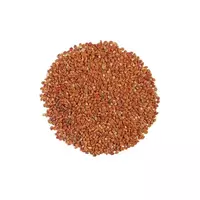Millet

In our latitudes, it is more usual to see wheat fields, and bake bread from wheat flour. But in the East everything is different, because the East is thin. As early as the 3rd millennium BC, China began to cultivate millet and bake bread from it. Much later, with the help of nomadic peoples and immigrants, millet entered Europe and Slavic lands.
Millet is considered a universal cereal rural and economic culture. Millet is used to make incredibly useful millet groats. The excellent taste qualities of the pshenka have long been appreciated by hostesses around the world. During the production of millet cereals from millet seeds, waste (sex and straw) remains, which are subsequently used to make animal feed.
There are several types of millet that are cultivated in agriculture. Millet is common, sown, chumiza or mogar (Italian millet), African millet, teff and raccoon, as well as southern small millet. People have long known that millet produces at least twice as much crop as any other cereal grain crop.
millet
Millet croup is recommended for people who have undergone long-term antibiotic treatment. Millet will help cleanse the body of side drugs and will not harm the intestines. Recent cancer studies suggest the real benefits of millet in treating tumors. Nutritionists, in turn, advise paying close attention to the calorie content of millet and the properties of cereals as a dietary product.
Millet is slightly inferior to rice, another well-known dietary culture, in its nutritional properties. However, millet has its own trump cards. With a sufficiently low calorie content, millet contains as many proteins as in semolina.
True, the quality of proteins in millet is much higher. This means that such proteins are better absorbed by the body, which makes millet an indispensable product in dietary nutrition. Millet is considered one of the main products in traditional medicine recipes.
Composition of millet
The benefits of millet are actively used in the treatment of a wide range of diseases. For example, the useful elements contained in millet manganese, copper and potassium contribute to the treatment of anemia. With increased blood pressure, magnesium, which millet contains in excess, will help.
Millet contains the same amount of starch as Fig. But the content of potassium and magnesium in millet is much higher (about 5 times) than in rice. Buckwheat is slightly ahead of millet in terms of the content of useful amino acids. In contrast, buckwheat contains an increased concentration of heavy elements such as copper and manganese.
millet 342 kCal
Energy value of millet (Ratio of proteins, fats, carbohydrates - ju):
Proteins: 11.5 g (~ 46 kCal)
Fats: 3.3 g (~ 30 kCal)
Carbohydrates: 66.5g (~ 266kCal)
Energy ratio (b | y): 13% | 9% | 78%
 Español
Español Français
Français Português
Português Русский
Русский 简体中文
简体中文 繁體中文
繁體中文 日本語
日本語 한국어
한국어 العربية
العربية Türkçe
Türkçe Қазақ
Қазақ Deutsch
Deutsch Italiano
Italiano Українська
Українська
